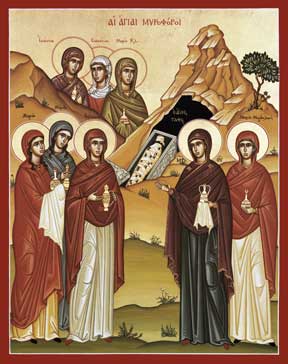
The “feminine genius” is the way that Pope John Paul II spoke about the contribution of women to church and society. Today in many countries in Europe and South America, International’s Women’s Day is celebrated. In Italy, in many of the parish churches, bouquets of mimosas are given to women who just happen to be walking by the church!
In Every Age
In honor of International Women’s Day, I’d like to celebrate the feminine genius that has shaped the Church. There is not enough space to really do the topic justice and to be fair, at times in the history of the Church it failed to protect the dignity of women and to fully recognize the gifts of women to the church and society. Today is a day to celebrate the church as a place that has nurtured the gifts and leadership of women. In the realm of the spiritual life, the Church never denied women’s call to holiness and to live fully the life of the Gospel. In every age of the Church, it has identified and honored women as models of what it means to be holy, of what the feminine dimension of discipleship looks like.
Evangelists, Martyrs and Doctors
The Church teaches that Mary, the Mother of God, is the model of the perfect disciple for men and for women. In Mary, we see that discipleship requires that we hear the voice of God, respond to God’s invitation and be of service in building the kingdom of God. Mary Magdalene is called the “Apostle to the Apostles” because it was to her that Jesus entrusted the first announcement of his resurrection. The African women, Perpetua and Felicity are two of our earliest martyrs and have left us a first-person testimony of their faith and martyrdom. Among the 33 doctors of the Church are three women. Teresa of Avila, a Spanish Carmelite, Catherine of Siena, an Italian Lay woman and Thérèse of Liseux, a French Carmelite who have through their lives and in their writings made a contribution to the faith that will be relevant in all ages. For this they are named Doctors of the Church.
Catholic Women’s Contribution to church and society in the United States
In the United States, it was the genius of many women who built the Catholic schools and Catholic healthcare systems that exist today. Among the first women’s colleges are Trinity University in D.C., founded by the Sisters of Notre Dame de Namur and St. Mary’s College, founded by the Sisters of Providence. Saint Elizabeth Ann Seton is the first native-born saint from the United States. She is joined by Saint Katherine Drexel, a Philadelphia native whose religious order, the Blessed Sacrament Sisters served in ministry to Native Americans and Black Catholics. Saint Katherine founded Xavier University, the only historically black Catholic college in the United States. Blessed Kateri Tekakwitha, a Native-American woman with a ministry to the sick and aging and Mother Elizabeth Lange, founder of the Oblate Sisters of Providence, the fist Black Roman Catholic order of sisters are just a few of the great American Catholic women. Many Mexican-American women find in the Venerable Concepcion Cabrera de Armida, a mystic and writer, a model for living fully the life of a Catholic wife and mother.
Every new age calls forth new models of living the fullness of the Christian life. There is no reason not to think that the Church and the country will continue to be shaped by a feminine genius as Catholic women continue to answer God’s call to study the faith, serve in ministry, nurture strong marriages, raise healthy and happy children and bring the Gospel to bear in professions of every kind. In a recent interview with the German Press, Pope Benedict reflected “I believe women themselves, with their energy and strength, with their predominance, so to speak, with what I would call their ‘spiritual power,’ will know how to make their own space.”

